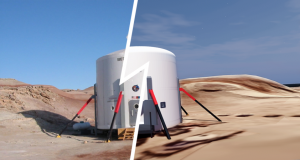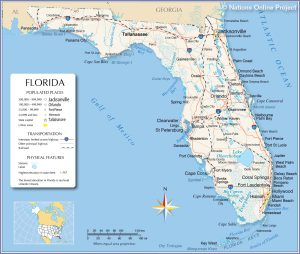Data from James Webb Space Telescope Suggests Rocky Planets Can Form in Extreme Conditions

A team of astronomers from around the world has harnessed the capabilities of NASA’s James Webb Space Telescope to conduct groundbreaking observations within the intensely irradiated inner regions of a disk, where rocky planets form. This marks the initial findings from the eXtreme Ultraviolet Environments (XUE) James Webb Space Telescope program, a venture centered on studying planet-forming disks in massive star-forming regions. The results indicate that the conditions conducive to the formation of terrestrial planets may be more diverse than previously assumed.
The focus of the XUE program is on characterizing planet-forming disks, vast and dynamic conglomerations of gas, dust, and rock fragments where planets take shape and evolve. These disks are prevalent in massive star-forming regions, which are believed to mirror the environments in which most planetary systems originated. Understanding how different environments influence planet formation is crucial for unraveling the myriad characteristics of various exoplanets.
Concentrating on the Lobster Nebula, also known as NGC 6357, located approximately 5,500 light-years away in the Scorpius constellation, the XUE program targets a total of 15 disks spread across three areas within this nebula. The Lobster Nebula, a relatively young and close massive star-formation complex, harbors some of the galaxy’s most massive stars, emitting copious amounts of ultraviolet (UV) radiation. The radiation can disperse gas, potentially shortening the expected disk lifetime to a mere million years. The unique capabilities of the James Webb Space Telescope now enable astronomers to explore the impact of UV radiation on the inner regions of protoplanetary disks surrounding stars similar to our Sun.
Lead scientist María Claudia Ramírez-Tannus from the Max Planck Institute for Astronomy in Germany emphasized, “Webb is the only telescope with the spatial resolution and sensitivity to study planet-forming disks in massive star-forming regions.”
The astronomers aim to analyze the physical properties and chemical composition of the rocky-planet-forming regions within the Lobster Nebula using the Medium Resolution Spectrometer on Webb’s Mid-Infrared Instrument (MIRI). The initial results center on the protoplanetary disk designated XUE 1, situated in the star cluster Pismis 24.
Arjan Bik from Stockholm University pointed out, “Only the MIRI wavelength range and spectral resolution allow us to probe the molecular inventory and physical conditions of the warm gas and dust where rocky planets form.”
Despite the constant exposure to high levels of ultraviolet radiation due to its proximity to massive stars in NGC 6357, XUE 1 displayed the presence of various molecules crucial for rocky planet formation. Rens Waters of Radboud University in the Netherlands remarked, “We find that the inner disk around XUE 1 is remarkably similar to those in nearby star-forming regions,” noting the detection of water and other essential molecules. The team also discovered small, partially crystalline silicate dust at the disk’s surface, considered the building blocks of rocky planets.
The significance of these findings lies in challenging previous assumptions about the specific environments conducive to rocky planet formation. The team’s observations suggest that rocky planets may form in a broader range of environments than previously envisioned.
Lars Cuijpers of Radboud University expressed the team’s surprise and excitement, stating, “This is the first time that these molecules have been detected under these extreme conditions.”
The team emphasizes that further observations within the XUE program are vital to confirming the prevalence of these conditions. Ramírez-Tannus added, “XUE 1 shows us that the conditions to form rocky planets are there, so the next step is to check how common that is.” The team plans to observe additional disks in the same region to determine the frequency of such conditions.
These groundbreaking results have been documented in The Astrophysical Journal.
The James Webb Space Telescope, a collaborative effort led by NASA, ESA (European Space Agency), and the Canadian Space Agency, stands as the world’s premier space science observatory. With its capacity to delve into mysteries within our solar system and beyond, Webb continues to contribute to our understanding of the universe and our place within it. The telescope has already played a pivotal role in detailed studies of exoplanets, including those in the TRAPPIST-1 system, providing crucial insights into their atmospheres and compositions.







